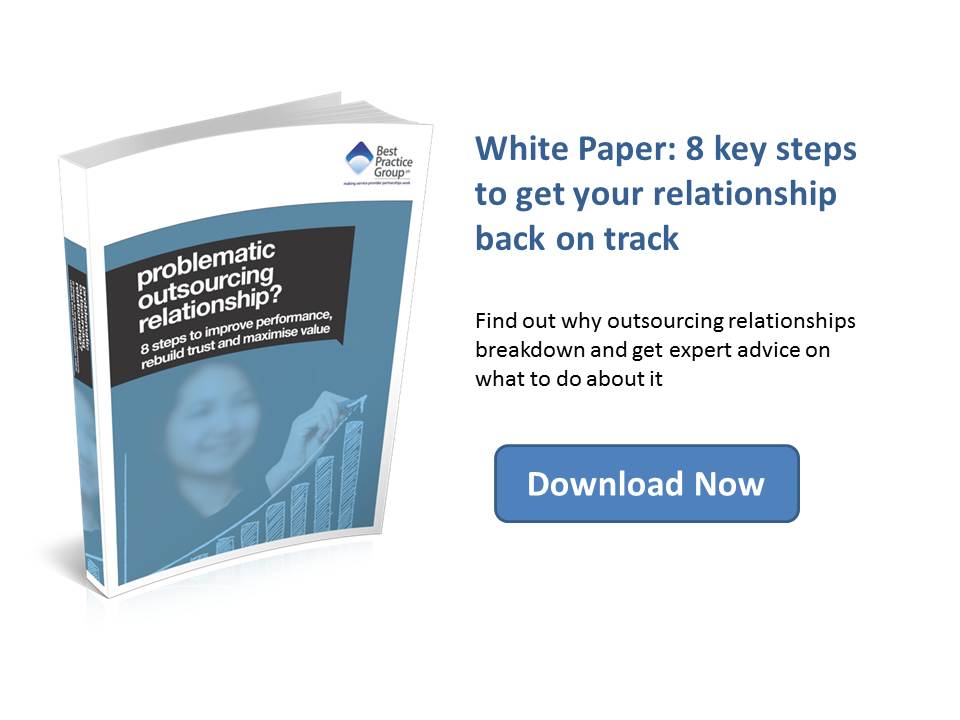 This article will guide you through three key lessons that we can learn from Kelly’s all-too-brief public sector career: from managing vendors, to fostering innovation and embracing and learning from both failure… and success.
This article will guide you through three key lessons that we can learn from Kelly’s all-too-brief public sector career: from managing vendors, to fostering innovation and embracing and learning from both failure… and success.
Last month, chief operating officer and head of the Efficiency Reform Group (ERG), Stephen Kelly, stepped down from his first senior public sector position. Since taking up the post of COO in 2012, after having begun working for the government in 2010, Kelly attempted to drive and foster innovation and initiative within the civil service, and shift the focus from ‘risk aversion’ to ‘risk management’.
Whether his resignation was due to those who were less keen on his maverick style, or because of his frustration at the delayed traction by some parts of the civil service to adopt his changes, we will probably never know, but there are certainly many things that we can learn from his example.
There seems to be a consensus in the public sector that Francis Maude took a decision to overlook Kelly and instead promote the chief executive of the civil service over him. It seems that, as a result, Kelly decided to move back into the private sector, becoming the new CEO of software company Sage.
Despite the briefness of his stint in the public sector though, Kelly can be credited with driving through more material and impactful change and innovation than any of his predecessors, going back many years. As well as negotiating new IT contracts with companies such as Microsoft and SAP, Kelly was also an active advocate for the Government Digital Service (GDS) and led the way on the next generation shared services plan in 2012, which helped to consolidate some of the Shared Service Centres.
In order to understand how we can learn from Kelly’s achievements though, it is vital that they are put into context so that your organisation can use these lessons to drive better value in its own complex service delivery relationships.
What did Kelly achieve?
Before joining the public sector workforce in 2010, Kelly had made his mark driving private sector innovation with software company Micro Focus. During his time with the company, revenues rose from £140 million to £450 million. And, when he announced his departure, share prices fell by 30% – a £100 million share value loss which reflects the respect shareholders had for the man. While Kelly’s role at Micro Focus was clearly a great success, after leaving the company, for personal reasons, he took on a public sector role.
Bringing his private sector experiences to bear on the public sector was what made Kelly so adept at his poacher-turned-gamekeeper role. His vendor relationship experience meant that he had an in-depth knowledge of the vendor marketplace and was able to comprehend what compelled vendors to sign up for government contracts. This, of course, enabled him to appreciate how vendors could best be driven to provide a cost-effective service.
Consequently, as Kelly did not come from a political or public sector background he was able to keep a pragmatic head on his shoulders. This meant that instead of resorting to a blame-game, which often brands suppliers as the bad guys, Kelly was able to get vendors on side from the beginning of the procurement process. This shift in perspective meant that he was able to reduce instances of vendors overcharging or failing to see through on their promises.
The birth of the Crown Commercial Service
In order to achieve prosperous and robust client/vendor relationships now and into the future, Kelly was also instrumental in the setting up of the Crown Commercial Service (CCS). The aim of this was to drive better value for the public sector’s complex contractual arrangements and help to keep vendors in line with expectations. By amalgamating the Government Procurement Service with a range of commercial functions within the Cabinet Office, the CCS was set up to drive value and foster good relations with vendors over the whole lifetime of their contractual relationships.
However, there is a possibility that the ideals the CCS was launched to champion may have been lost in translation. It has been suggested that current staffing at the service seems to be made up predominately of procurement experts, rather than a much stronger mix of those with a vested interest and knowledge of contract management and intelligent client functions. By recruiting mainly procurement people, the CCS is likely to struggle to drive maximum value, and is instead, by definition of the individuals recruited, may find its focus towards solely on making savings in the very initial stages of contractual agreements. Whether the new head of the civil service can see and resolve this problem, if it turns out to be true, remains to be seen.
As an advocate of the Government’s Digital Service, Kelly was also instrumental in breaking down barriers between local and central government, particularly when it came to technological communications. In turn, this helped to save money as it reduced many of the insurmountable restraints that local government bodies were struggling to overcome, especially when it came to unrealistic security restrictions.
So what can be learnt from Kelly’s successes and failures within the civil service? While he did manage to drive through more change than his predecessors, it has been suggested that he was ultimately frustrated by the failure of some to willingly adopt his policies.
In order to learn from Kelly then, here are our top three lessons to bear in mind when navigating complex service relationships and trying to create an innovation-focused team.
Three lessons that we can learn from Kelly
1. Keep your eyes on the main prize
When dealing with external service providers or your own team, it is vital that you focus on the big goals of a project rather than getting caught up with the smaller details. Just as the reason that Kelly helped to mobilise the CCS was to help drive maximum value in complex provider relationships throughout their lifetime, he also tried to drive innovation and creativity within these relationships from the word go.
By doing so, he hoped to create new ways of driving value well into the future. Taking the time to invest in innovation is crucial if you want your organisation to succeed and develop, and to discover new ways of achieving its goals.
While these are easy statements to make, putting them into consistent practice is much harder, particularly when successive governments keep changing the rules with regard to how complex service relationships are to be managed.
The pressure to continually cut costs that is also placed on organisations leaves little room for innovation, which in turn means that they are sometimes unable to come up with creative ways of rising to the challenge. By focusing on the big goals though, you will be able to foster a clearer vision of how savings can be made, maintain an innovative culture and not get too sidetracked with the day-to-day hurdles you will come up against.
2. Recruit the mavericks – be brave
You should do everything you can to recruit the mavericks in your own organisation or from the outside when you need to consistently drive new innovation and change within your organisation. Encouraging team members to use their initiative and discover new ways of innovating, and to make these characteristics part of your recruitment/engagement criteria, will give a new sense of purpose to each department within your organisation.
Fostering innovation and the use of initiative within your team isn’t just a matter of throwing money at them. Really listening to your team, and giving them the room to make mistakes and learn from both their successes and failures is the best way to drive innovation and can help your staff to feel truly valued. This approach does though require a certain amount of bravery and management skill from the senior executives on your team.
Giving your staff the room to fail, fail and then fail again on different (not the same) initiatives, will also mean that you will have to be open about your own personal failures. Learning to encourage calculated risk taking and everything that can be gained from it, is hard to put into consistent practice if you are in the public sector, especially when most public sector bodies are decisive about the fact that failure is always bad.
Fostering a positive learning environment where failure is simply a factor of someone’s education and learning behaviour from the environment around them, is one of the surest ways to motivate your team. For a more detailed synopsis on this point, see Daniel Pink’s book, “Drive”.
If you work in the public sector, and in particular, local government, it’s important to understand that we know political opposition members will have an absolute field day if you start to embrace failure and make room for it in the day-to-day running of your organisation. This problem of political argument and witch-hunting is unlikely to ever be solved, but it can at least be managed by communicating effectively with your team. Giving them the skills to correctly manage stakeholders and provide a ‘lessons learned’ synopsis by emphasising what will change next time around and the benefits to be achieved balanced against the risks of implementation, helps to deflate those arguments very early.
3. Keep at it
One of the most important timing points we can learn from Kelly being instrumental in changing the approach to innovation in the civil services, is that doing so cannot be achieved overnight. Knowing where to start is also crucial when you’re trying to change your organisation, and as with most things in life, it is important to learn that change can only come from you.
Encouraging failure in order to arrive at success may take some getting used to if your team has not worked in a similar environment before. Running regular workshops is a great way in which to adapt departmental or organisational ways of working, and it is important that you closely monitor your own challenges too, so that more junior members of the team can learn from your example. Repeating these steps over and over again is the only way to truly ingrain this system in your organisation and foster a sense of innovation and creativity in which no one is afraid of taking risks in a managed and responsible way.
It is also important that you steer clear of witch-hunts when someone fails so that team members do not become scared of innovating. Keeping detailed notes on your workshops is also the best way to mark how your organisation is changing as a result of all of these initiatives and what it is that is driving change.
While Kelly managed to foster a great deal of innovation in a short amount of time, whether his innovative measures will be kept up after his exit is yet to be seen. If you wish to truly develop an environment that encourages innovation within your organisation, it is integral that you do so with the help of staff who have already been trained to use their initiative and have learnt from the innovative behaviour of others. While Kelly may well have been frustrated in some of his aims due to the rigidity of the civil service, with time, effort and creativity it is possible to create fruitful relationships with external service providers while also driving down costs through creative and innovative thinking.


